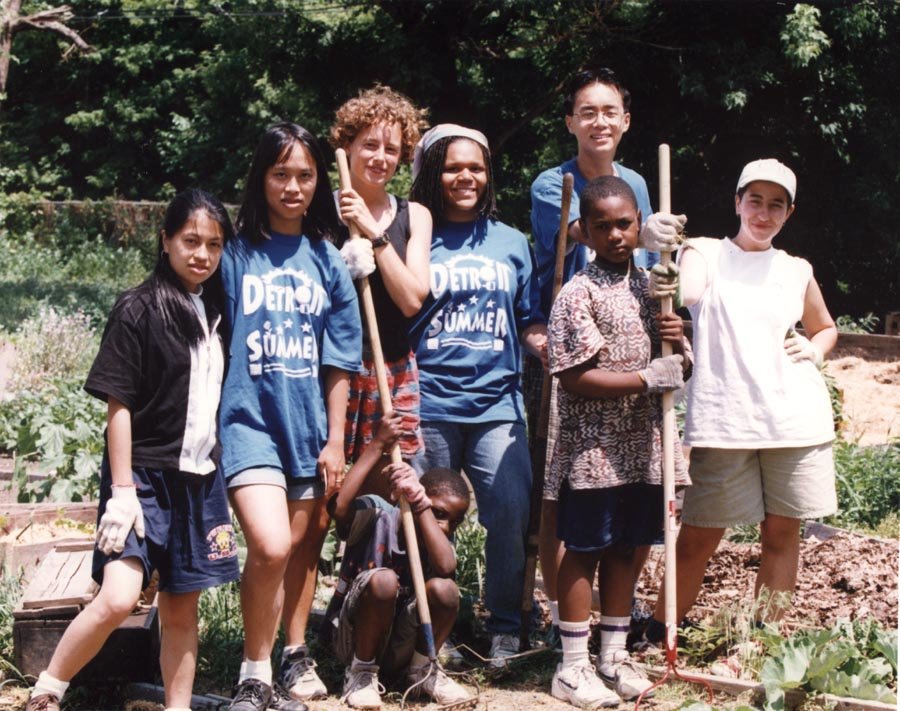
Our History

The James and Grace Lee Boggs Center to Nurture Community Leadership was founded in 1995 as a non-profit 501(c)(3) for fulfilling the mission encapsulated in its name
In her autobiography, Living for Change (1998), Grace Lee Boggs offers the following memories of founding the Boggs Center in her Field Street home:
“In November 1994 I invited twenty-eight movement-oriented, theoretically minded African Americans to gather in Detroit to respond to the question, ‘What Fire Can a Younger Generation Catch from the Work of James Boggs?’ The phrase catch fire was borrowed from a Sonia Sanchez poem with her consent. Joining the Detroit participants were Vincent and Rosemary Harding from Denver, Robert Lucas from Chicago (he led the 1966 march into Cicero), Jim Embry from Lexington, Kentucky, Marcia Brown from Newark, Jim and Barbria Jackson from Muskegon, and Bunyan Bryant and Jim Chaffers from Ann Arbor. Altogether there were six elders, seven young people under twenty-five, and the rest in their thirties, forties, and early fifties. I acted as facilitator. The discussion reminded me of the black community as it was prior to desegregation—multiclass and multigenerational where elders were respected and everyone was accepted and felt safe because unity was so necessary for survival in the face of the common oppression. One concrete idea that came out of the gathering was Alice Jennings's suggestion that we create a James and Grace Lee Boggs Community Foundation to develop community leadership. Since then, the James and Grace Lee Boggs Center to Nurture Community Leadership has been incorporated with an interim board of directors. The interim cochairs are Shea Howell and Donald Boggs, Jimmy's youngest son who is also president of the Organization of School Administrators and Supervisors. So far the board has raised the money to purchase the house at 3061 Field Street, which has been the site of so many movement-building activities over the years, and a core group is now working on clarifying the mission and work of the center. We have decided on a five-year timeframe and are generally agreed that the center will be a Community Think Place and Visioning Center that through dialogues and multimedia will honor the work of community people, bring together elders and young people, and open up the minds especially of young people and children to rethink fundamental ideas about revolution, politics, and citizenship because, as Jim Jackson puts it, ‘Ideas are the beginning of power. Ideas that enlarge people have been taken out of the struggle. Instead people use ideas to blame others for what is going on instead of to empower themselves.’”
- Grace Lee Boggs, Living for Change












